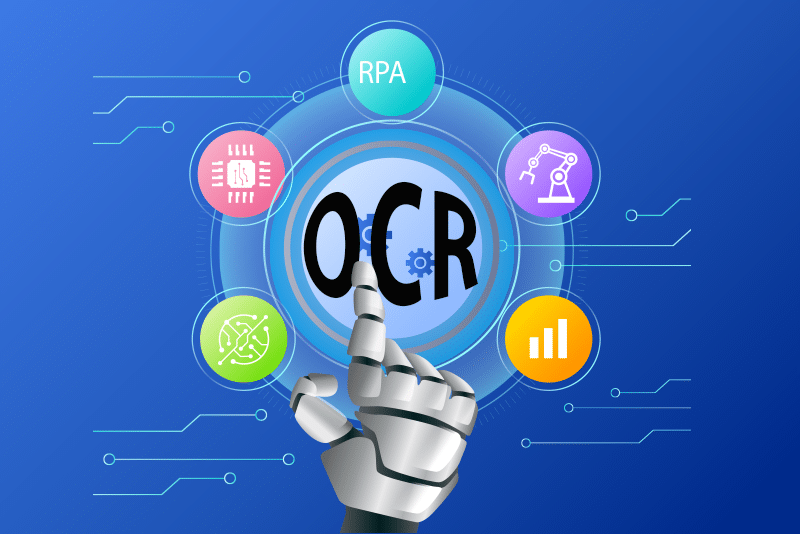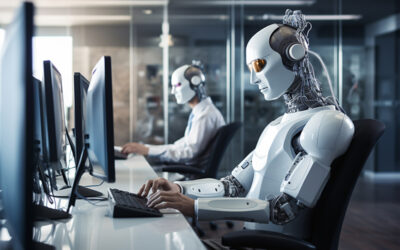According to reports by the International Data Corporation (IDC), the amount of data generated globally is expected to surpass 175 zettabytes by the end of 2025. Despite this, more than 80 percent of all company data remains in unstructured formats such as handwritten information, printed papers, emails, and PDFs. These documents cannot be compiled or searched until the data is converted into a standard structured format, like text files. Unstructured data formats make it difficult for machines to understand or analyze, and can be of no use to businesses. In such cases, it is important for businesses to adopt advanced technologies to utilize their data and increase efficiency.
The significance of implementing advanced tools such as Optical Character Recognition (OCR) and Robotic Process Automation (RPA) to convert unstructured data into structured data has become evident at this point. Businesses can rely on data processing services to use OCR and RPA for accurate data extraction, validation, transformation, and integration.
Typically, robotic process automation (RPA) bots automate the performance of tedious, repetitive tasks. Optical Character Recognition (OCR) enables RPA bots to handle tasks that require scanning documents and converting them to a format readable by machines. RPA bots depend on OCR for many document automation tasks, including invoicing, resume screening, and inventory management, among others.
What Is OCR in RPA?
Regarded as a key feature of any good robotic process automation (RPA) solution, optical character recognition (OCR) is a tool that captures handwritten and printed texts in images (unstructured data) and converts them into characters readable by machines (structured data). Today’s artificial intelligence (AI)-powered OCR solutions can recognize and capture data from machine-printed documents with high levels of accuracy.
Robotic Process Automation (RPA) bots are designed to automate the completion of tedious repetitive tasks by mimicking human interactions with computers. Digital bots can be equipped with optical character recognition (OCR) technology to perform activities that include document scanning and conversion to a machine-readable format. The majority of document automation operations performed by RPA bots, such as invoicing, resume screening, and inventory management, rely on OCR.
RPA is considered a field that utilizes various data technologies to automate business processes. However, in many processes of a company’s operations, scanned documents are used. Additionally, most of these documents are delivered or generated as PDF files, and employees need to extract specific data from them. In such situations, a Robotic Process Automation (RPA) solution based on image recognition is the perfect solution. The data format used is an important aspect. For instance, if the data generated is in text format, developers can use the structured format to validate text data or search for data in the text, based on patterns. On the other hand, if the document is scanned as an image, the only way to read the data is to use OCR technology.
Types of OCR for RPA
Generally, there are two different types of OCR business cases within the RPA realm. The first type involves converting unstructured data from scanned documents into structured, digitized data, which can then be used efficiently. The solution reads and extracts information from a scanned document, such as an invoice, and transfers the data to any enterprise application, such as CRM, ERP, or a legacy system. The second category offers more complex automation capabilities. For instance, this involves using surface connectivity to automate applications on remote machines. Advanced RPA OCR technologies can effectively read the image and extract the necessary text from the screen image or simulation of the application. This, in turn, allows organizations to automate more processes and expand their automation projects.
Can Every Document Be Read Using OCR?
One of the most important aspects when using OCR in RPA is to analyze whether the data is complete and correct; otherwise, it will be useless. The reading efficiency of the document depends on the quality of the documents. For instance, poor-quality documents or documents containing poor handwriting will significantly affect the quality of reading. Advanced text recognition algorithms come in handy in such situations. There are many companies on the market that provide ready-made software or advanced OCR algorithms. When deciding on such a solution, it is important to ensure that the software has an interface that provides a document for processing and receives processed data from OCR. However, to ensure suitable data recognition efficiency, RPA developers automate the testing of the quality of data returned by OCR.
Key Benefits of Using OCR in RPA
OCR and RPA are two critical technologies that businesses need to fully harness the power of their data and implement it into business processes to improve efficiency. When combined, OCR and RPA offer several benefits, such as:
- Enhancing Speed: Manually extracting and analyzing significant amounts of data from thousands of documents can consume a lot of time and effort. OCR automation can drastically reduce the time needed to recognize, extract, analyze, and organize data as software bots can operate nonstop for days without getting tired. Compared to manual extraction and processing, OCR can handle a huge number of documents quickly.
- Improving Accuracy – Manual extraction and processing of unstructured data can negatively affect data accuracy since human employees may make mistakes. Intelligent RPA with OCR can be much more accurate and efficient when extracting data from unstructured documents and various forms, such as emails and paper documents. OCR and RPA can greatly reduce mistakes and incorrect data interpretation, thereby providing information back to human users in an intuitive manner.
- Saves Cost – Manual data input, processing, and extraction, can be quite expensive. By choosing RPA with OCR, you can save costs on employing staff for data extraction and copying, printing, and other expenses.
- Increasing Productivity – OCR image recognition software significantly reduces the amount of routine paperwork an employee must handle. This makes it easier for them to access digital data that can be shared and reviewed within the organization. This, in turn, increases the productivity and profitability of the business when employees are given a simpler work environment.
- Provide Better Accessibility – Visually challenged people can greatly benefit from OCR software’s ability to transform text into speech, increasing accessibility. Text-to-speech conversion can increase productivity by allowing users to passively consume information, and fostering a more inclusive user experience.
- Increased Client Satisfaction – Higher levels of personalization and customization are possible due to more accurate data processing. This also ensures a better consumer experience. For instance, some RPA and OCR software solutions can translate text into foreign languages, which helps enhance customer satisfaction in the long run.
As mentioned above, Optical Character Recognition (OCR) technology has great practical use in the field of robotics. The efficiency and precision of text recognition affect the final success of a specific project. In more advanced and extensive OCR tools, machine learning is used to convert unstructured data into structured data formats in an easy manner. By leveraging these tools, organizations can enhance the efficiency and effectiveness of their data processing tasks.
Looking for reliable data-related support?
Contact MOS and transform your business today!




